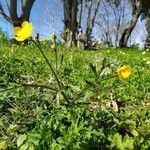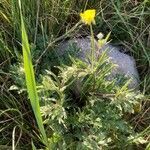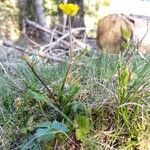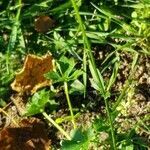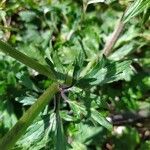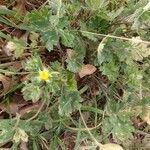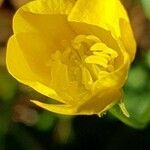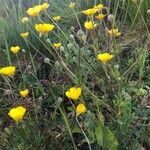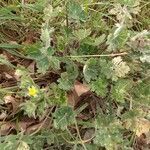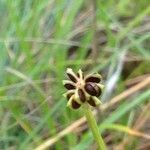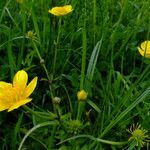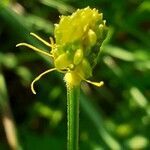Hirsute, cormose perennial, erect, 2–6 dm, the stems bulbously thickened at the base, basal lvs long-petioled, 3-parted, the terminal segment stalked, all segments broadly obovate to subrotund, deeply cleft and lobed; cauline lvs few, much smaller and less divided; fls long-pedicellate; pet broadly obovate, 8–14 mm; anthers 2–3 mm, rarely less; achenes broadly and obliquely obovate, 2.5–3.5 mm, smooth, much thicker apically than basally, distinctly margined; beak stout, outcurved, 0.6–1 mm; 2n=16. Native of Europe, naturalized in fields, meadows, and lawns. Apr.–July.
A small plant which keeps growing from year to year. It grows 30-50 cm high and spreads 50-100 cm wide. The leaves are oval and pointed and have 3 large lobes with teeth. The flowers are bright, shiny and yellow. They are 30 mm across.
